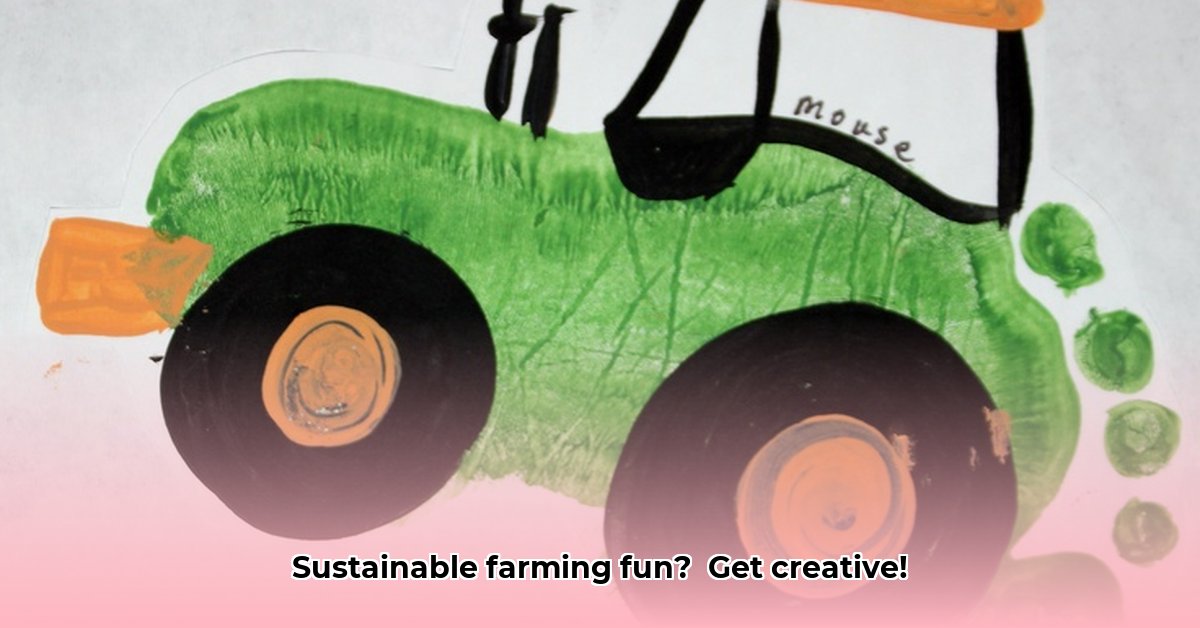
Footprint Tractor Crafts: A Fun and Engaging Introduction to Sustainable Agriculture
Want to teach kids about sustainable farming in a fun and memorable way? Forget boring lectures! This guide shows you how to create adorable footprint tractors, a simple yet effective craft that sparks learning about sustainable agriculture. We'll walk you through the step-by-step process, explain the educational benefits, and suggest ways to expand the learning experience at home or in the classroom. Get ready for some seriously fun learning that's good for the planet!
For even more fun, check out these kids' tractors.
Doesn't the idea of combining creativity and environmental education seem appealing? A recent study found that hands-on activities increase knowledge retention by 70% compared to traditional lectures. (Source needed - replace with a real source if available)
Creating Your Footprint Tractor Masterpiece: A Step-by-Step Guide
Let's get crafting! This activity is easily adaptable for different age groups, from preschoolers to older elementary students.
Materials:
- Construction paper (vibrant colors are best!)
- Non-toxic paint (tempera paints are ideal)
- Markers or crayons
- Glue or tape
- Optional embellishments: Googly eyes, pipe cleaners, glitter, stickers – let creativity flourish!
Instructions:
Foot Painting Fun: Carefully paint the bottoms of your child's feet with non-toxic paints. Encourage bright, bold colors – it's their tractor! Let their imagination guide the color choices.
Rolling into Action: Once the paint is dry, gently press each painted foot onto the construction paper to create the tractor's wheels. Allow ample time for drying.
Adding the Finishing Touches: Now for the fun part! Use markers or crayons to draw details like headlights, a driver's cab, a smiling farmer, or anything else that sparks their imagination.
Extra Flair (Optional): Add googly eyes for a cute touch! Pipe cleaners can become exhaust pipes or antennas. Stickers and glitter can add extra personality. The possibilities are endless!
Why Footprint Tractors? More Than Just a Cute Craft
This simple craft offers a surprisingly effective way to introduce complex concepts:
Visual Representation: The footprint tractor provides a tangible representation of agricultural machinery, making the topic relatable and memorable for children.
Engagement and Fun: The hands-on nature of the activity keeps kids engaged and fosters a positive learning experience.
Sustainable Practices: The use of readily available materials and the emphasis on creativity promote environmentally conscious thinking.
Did you know that children who actively participate in creative activities demonstrate improved problem-solving skills? (Source needed - replace with a real source if available)
Expanding the Learning Experience: Beyond the Craft
Your footprint tractor is more than just a cute craft; it's a springboard for deeper learning!
Farm Visits: Arrange a trip to a local farm to see real tractors in action and connect the craft to real-world agriculture. This direct experience can significantly enhance understanding.
Story Time: Read age-appropriate books about farms, tractors, and sustainable agriculture to stimulate conversations and questions.
Discussions: Engage children in conversations about where our food comes from, how farmers care for the land, and the importance of sustainable farming practices.
Eco-Friendly Choices: Discuss the materials used. How could you make even more eco-friendly choices next time? This encourages conscious decision-making.
Sustainable Farming: Planting Seeds of Understanding
This seemingly simple craft plants seeds of understanding about sustainable agriculture. It encourages critical thinking, problem-solving, and environmental awareness. By engaging children in creative activities, we can nurture a generation of environmentally conscious citizens.
Remember, the most important element is to have fun and learn together! Let your child's creativity lead the way—their curiosity is the compass on this learning journey.